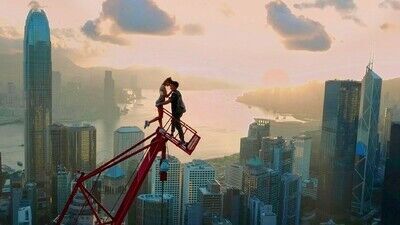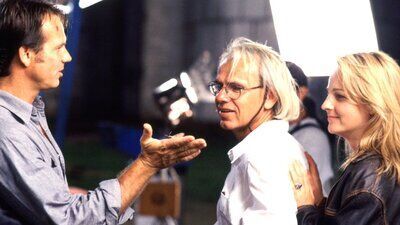MacKenzie and Collier set the scene with evocative imagery of the complex machinery that makes these carpets, weaving thousands of threads into the banal tapestries we traipse upon every day. “It is the canvas on which all the other art rests,” says Lew Migliore, one of the many colorful figures whose livelihood is found in the flooring world. There’s also father and son Doug and Lloyd Caldwell, who’ve helped run a family carpet business for over 50 years. Introduced sitting in front of a bold, swirly red-hued carpet, Lloyd laughs, remembering how “this industry was really put together by north Georgia hillbillies and half of them couldn’t read or write.”
There’s also freelance textile designer Roderick James, a Scottish expat who loves the country lifestyle—emphasis on style—and his partner Jon Black, a musician who writes jingles. While MacKenzie and Collier weave all these story threads together to craft a whole picture of this industry in crisis, Roderick and Jon’s story pops, like the overarching pattern in one of the carpets he designs.
Early on in “Carpet Cowboys,” Jon takes the filmmakers on a drive, pointing out where one corporation displaced 36 houses, including a “cute little house” owned by his mother’s family and a tree he played in as a kid that was completely dosed to make way for a parking lot. Yet he says although this destruction took away homes, it brought work. “It’s just part of a cycle,” he says, as footage of an empty lot fills the frame. What could be bleaker than a cycle that creates jobs but destroys homes? At least Arthur Miller’s Lomans had a job and a house.
The rise of corporate consolidation and deregulation of monopolies puts the small, family-run businesses out of work. Lee Philips, whose job involves stress testing and stain resistance science, points out that during the industry’s heyday, there were around 480 mills within 25 miles of Dalton, but by the 1990s, it was down to about a dozen. With the loss of small businesses, so, too, came the loss of the camaraderie found within this community. While some in the business are still passionate, like Doug, who can pick out his favorite pattern amongst the thousands of rugs in his showroom, most of the companies left are faceless corporations whose only passion is profit margins.







Leave feedback about this